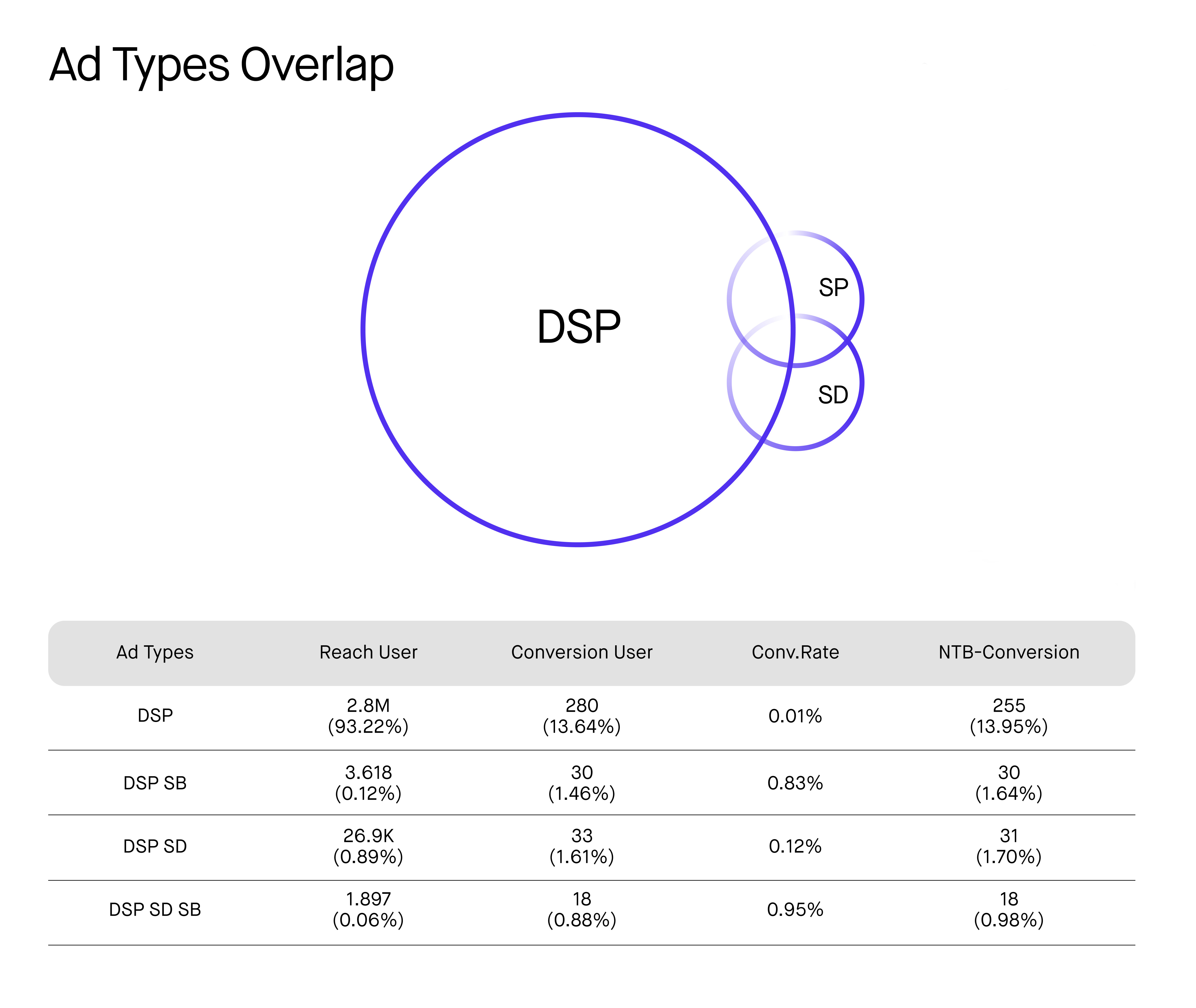For the first time, advertisers on Amazon have access to data about the entire customer journey. Amazon Marketing Cloud (AMC) offers insights into how, when and in what order shoppers are coming into contact with different campaigns – a revolutionary development in advertising strategizing.
Our retail media team has spent the past year getting acclimated with AMC, testing out different queries and determining exactly what helps clients meet different business objectives.
With one year of working with AMC in the books, we have discovered a few universally applicable themes. They have allowed us to gain a holistic understanding of shopper behavior that helps us optimize advertising strategies and drive sales. Here are five of our key takeaways from our team’s collective efforts.
Upper funnel campaigns cannot be forgone
While data outcomes differ for every brand, we detected a theme that rang true throughout most projects: upper funnel campaigns are not getting the credit they deserve.
Until now, the most common method of determining campaign success was through last touch attribution. Advertisers were measuring a complex customer journey entirely based on the last campaign they were interacting with, which greatly undervalued awareness campaigns.
With AMC, you can look at the first touchpoint, the last touchpoint and everything in between to get a complete picture of the customer journey. It help you evaluate campaigns based on what they are designed to do. Upper funnel campaigns are meant to generate awareness, so evaluating them based on that offers a clearer picture of their performance. When you evaluate generic search campaigns and prospecting display campaigns on a first-touch rather than last-touch basis, their effectiveness improves tremendously. These insights can lead to improved strategy and budget allocation.
The more ad types a customer sees, the better
In addition to upper funnel campaigns, we want to stress the importance of ad type overlap. Standard reporting didn’t provide any indication of the various ads a customer may see before they convert, leaving advertisers in the dark about the combined impact of different ad types.
AMC indicates the likelihood of a customer making a purchase when they see a Sponsored Product ad, for example. However, that likelihood increases 3-fold when the customer also sees a video earlier in their journey. Running the full spectrum of products generally increases conversion effectiveness more than running one ad type.

It’s worth evaluating individual (groups of) products
Many of our clients have a wide range of product offerings, which appeals to different audiences.
For example, we work with a consumer electronics brand that offers everything from refrigerators to air conditioners. We’ve learned with insights from AMC that a one-size-fits-all strategy does not exist for all of their products.
With AMC, we are able to see the unique search behavior patterns and paths to purchase for individual product groups. This granular data enables revolutionary strategy optimization. With AMC, we can see that most conversions for air purifier products, for example, stem from generic search campaigns. On the other hand, the demand-side platform is the most relevant source of revenue activation for air conditioner products.
AMC enables us to build effective strategies for specific product lines, which drives strong results because we can adapt to the purchase path for specific product lines. We can even determine strong cross- and upselling opportunities.
Strategically planning the reports you’d like to generate one or even two years out
With such a broad level of data and reports available, keeping a top-level perspective is paramount. This means not just waiting for insights to pop up, but strategically planning the reports you’d like to generate one or even two years out. Determine which report categories make the most sense based on your business objectives and how often you should be running each.
There is a ton of data available and many questions that AMC can help you answer, but without an overarching plan, you cannot create a comprehensive picture. You need to define concrete steps and milestones that you would like to hit throughout the year. This not only informs, but also streamlines and optimizes your advertising strategy.
We have found that a mindset of aiming for overall sales growth is far more productive than just monitoring ads performance. Strategies need to take an omnichannel approach, creating a seamless and integrated customer experience across multiple marketing channels.
There’s a lot to look forward to
Our first year working with AMC has presented a lot of challenges, but also pushed us to find innovative solutions as we continue to optimize.
As for the future, we’ve kept an eye on indications from Amazon and made some predictions on what’s to come. We’ve seen glimmers of beta testing for a more definite way to measure incrementality based on retail and ads data which will eliminate the guesswork around retail numbers. Seeing how much certain campaigns overlap with organic will offer complete clarity of incrementality.
Long-term, AMC will only become easier and more user-friendly. The various steps and entities that now make up AMC, will likely turn into more of a point and click model. We also predict that it will have its own frontend, becoming another option in the console menu within Amazon Ads.
We also imagine a lot more flexibility with attribution models. This will enable users to set their AMC-enabled account up to measure on a first-click, last-click or linear basis. Further in the future (we’re talking years, rather than months) native automated bidding may also develop to run off of a chosen attribution model that is most appropriate for an account.
AMC marks an exciting turn in retail media. Though there are still many challenges to overcome, we continue to learn and optimize our teams, tools and processes. AMC has been instrumental in driving conversions and maximizing advertising effectiveness and continues to evolve.
Contact us to explore the possibilities of Amazon Ads
Principal Paid Advertising at DEPT®





